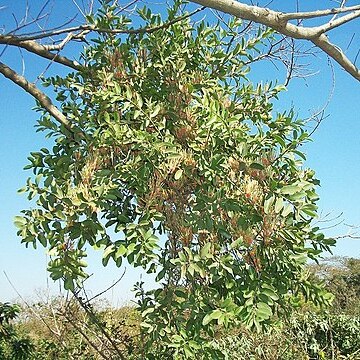Corolla usually joined less than halfway, 5-lobed, radially symmetrical, mostly yellow to green, flushed orange on tube, silky villous or at least with stellate and some long subsimple hairs on buds; tube constricted above a basal swelling, glabrous or hairy inside; lobes spreading-reflexed from below middle.
Flowers generally few, sessile in heads, sometimes shortly racemose or elsewhere spicate; peduncles axillary, clustered at older nodes or terminal on short shoots bearing (1)2 pairs of leaves; bract ovate to subcircular, concave, sometimes with a leafy limb.
Stamen filaments attached well above the base of the lobe, the upper thickened and flattened part breaking off with the anther when the flower is opened; anthers 4-thecous, with a small bifid or hammer-shaped apical connective-appendage.
Shrubs mostly spreading 1–2 m from a single haustorial attachment; hairs stellate and dendritic, longer ones on flowers subsimple; twigs terete.
Leaves opposite, subopposite or partly alternate, sometimes clustered on short shoots, penninerved.
Berry orange, reddish or blue-green, with persistent calyx urceolate; seed orange to red.
Receptacle generally long-hairy; calyx cupular to tubular, subentire to shortly toothed.
Style filiform; stigma capitate.
